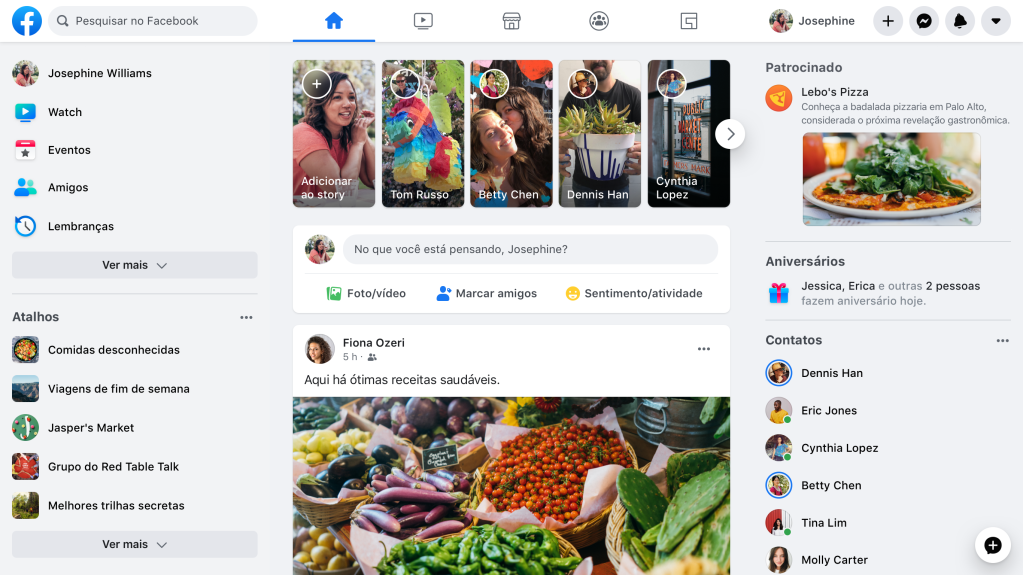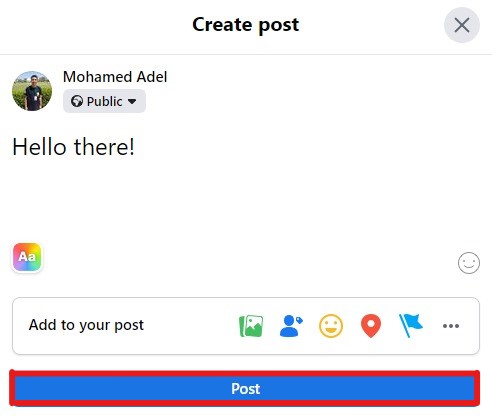
Open-Source Internship opportunity by OpenGenus for programmers. Apply now.
In this article, we will discuss briefly what Backend Development is all about, Backend Development tools and technologies.
Every website on the internet can be split up into two parts, The Frontend and the Backend.
The Frontend is the visual and fancy stuff you can see on a website like photos, colors and all the visual stuff you can actually see, And the Backend doesn't really look that cool as the Frontend but it plays a vital role to actually show you the web application you see.
Let's take Facebook.com as an example, in the below image you can see the buttons, icons, images and their colors, This is the Frontend part.
The Backend will store your account, Published posts, Likes, Search history and much much more in the database.

What's a server?
As an example let's say we are still on Facebook.com and we need to Publish a post, So we finish writing our post and click on "Post" to publish it, So what exactly happens after clicking?!

We are now going to explain what exactly happens in the background.
Any computer that is connected to the internet including your computer and my computer, Can send a message across the internet to another computer that's also connected to the internet.
So, to simplify things, Facebook has a computer in their office building somewhere and our computer will send a message containing our Facebook post to that Facebook computer. In this scenario the computer that is sending a message is called a client and the computer that is receiving the message is called a server. Now you can consider that a server is a computer or just any piece of hardware that acts as a platform for sharing data, In the most of companies they have a big computer or a hardware piece that acts like a server and in the big tech companies they have a large server rooms like the image below :

Backend Programming Language
Now we've sent the Facebook server the message to make a post but there is a little problem here, Computers can't receive messages by default we have to program them to be able to receive messages. To do that we need a Backend programming language, Almost every programming language has a feature that turns a computer into a server and allows it to receive messages.
Popular Backend programming languages are:
- PHP
- JavaScript (NodeJs)
- Python
- Java
- Ruby
- C#
However using a Back end programming language by itself could be really difficult and requires a huge amount of code, So there are two tools that helps with this:
- Backend framework
- Package manager
Backend Framework
A Backend framework helps us to create a server much easier and with a lot less code. Each Backend programming language has a few different frameworks to choose from, But the most popular ones are :
- Laravel for PHP
- ExpressJs for JavaScript
- Django for Python
- Java Spring for Java
- Ruby on rails for Ruby
- ASP.net for C#
Package Manager
In the Backend we also use a lot of code that other have written, Called packages, To do common tasks like doing calculations, Talking to a database, And setting up user login and authentication. We typically use a lot of packages in our Backend and in order to install and manage all these packages we use something that called a package manager. Each language has it's own package manager, The most popular ones are :
- Packagist and Composer for PHP
- npm for JavaScript
- PIP for Python
- Maven for Java
- bundler for Ruby
- NuGet for C#
These are all the technologies we need to create our Backend server, The next problem we have is we need somewhere to save the data for our website
Database
Going back to our Facebook example, Data could mean our user data like the login information, Pages and personal profile information as data for all the posts that are published on Facebook, The post content, Photo, Date. To do this we use a database. A database helps us store and manage data, It's just a piece of software that usually runs on a different computer and we have to do some setup so that our Backend can communicate with the Database, The most popular databases are
- MySQL
- PostgreSQL
- MongoDB
So, If you are just starting out, This is basically all you need for the Backend, You can build most of your projects with just a server and a database
Request-Response Cycle

For understanding the Request-Response Cycle, Let's consider you wanna reach your friend's profile page by entering his profile URL in the browser. This what exactly happens
- When a user presses enter the browser makes a request for that URL.
- The request receives at the server and processes what the request actually needs.
- The server sends back a response to the client with an HTML page that contains your friend's profile page.
This was how Request-Response Cycle works in short.
APIs
In today's software development, APIs (application programming interfaces) are crucial for connecting different parts of an application, such as software, applications, databases, and services. They simplify the process of communication and data transfer between the server-side software architectures, often replacing more complex programming techniques. Essentially, APIs act as connectors that seamlessly integrate different components of an application, making it easier to build and manage software.
Common skills needed for a Backend Developer
Backend developers typically require a range of technical skills to build and maintain the server-side of applications. These skills include:
- Proficiency in at least one server-side programming language such as Java, Python, Ruby, C# or PHP.
- Knowledge of web application frameworks such as Django, Ruby on Rails, Java Spring, ExpressJs or ASP.Net.
- Understanding of database management systems like MySQL, MongoDB, or PostgreSQL.
- Knowledge of web servers and related technologies such as Apache, Nginx, and AWS.
- Familiarity with version control systems like Git.
- Knowledge of API design and development.
- Proficiency in testing and debugging code to ensure proper functionality.
- Familiarity with front-end technologies such as HTML, CSS, and JavaScript.
In addition to technical skills, Backend developers also require strong problem-solving, analytical, and communication skills, as they are often responsible for working with other members of a development team and troubleshooting complex issues.
